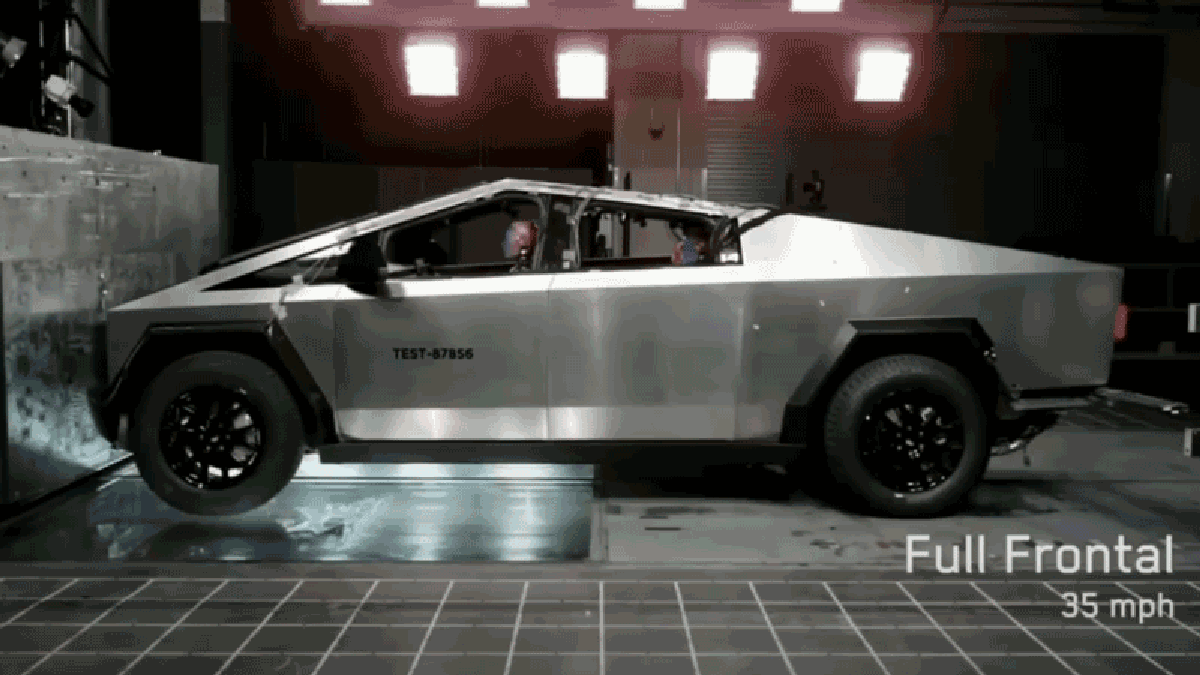A slow trickle of Cybertrucks are making their ways into American’s hands, though the roll out has not been without some speed bumps—especially when it comes to that “stainless” steel body. It’s that same body that has provoked questions about the crash worthiness of the Cybertruck. Unfortunately, it’s a question we won’t have the answer to any time soon.
I reached out to both the National Traffic Safety Administration and the Insurance Institute of Highway Safety—both of which told Jalopnik there are currently no plans to test the Cybertruck for crash worthiness.
You see, not every vehicle on the road is crash tested. Lower volume models, rare or expensive vehicles often slip under the radar of regulatory organizations which tend to look to do the most good for the most amount of people. NHTSA already released its list of vehicles it plans to crash test for 2024 in December and, while several EVs made the cut (including VinFast models) the Tesla Cybertruck was not one of them. The IIHS isn’t bothering with it either, until more people are interested in buying one or production really ramps up.
Tesla implied crash testing the truck in a video it showed last November during an event surrounding the initial delivery of the first Cybertrucks, but considering we have no data provided from that “test” it’s of no use to safety-conscious consumers. Not to mention Tesla’s recent past of releasing misleading videos would make any wise consumer pause, but even in its own video the truck seems to shatter rather than crumple in a head-on collision.
There’s been at least one crash involving a Cybertruck since the vehicle’s release, which resulted in minor injuries to the driver of the truck itself, but that is also not much of a data point to work with either.
While Musk claims the Cybertruck is the only vehicle for your discerning apocalypse prep fan, it’s yet to be proven exactly how safe the vehicle is both for those inside and outside of its utilitarian body panels. Does it really matter if a vehicle is bullet-resistant if it can’t protect you from the much more mundane risks of everyday driving? Maybe it can! We won’t know until the vehicle is vigorously—and independently—tested, which won’t happen at least in the next 12 months.

